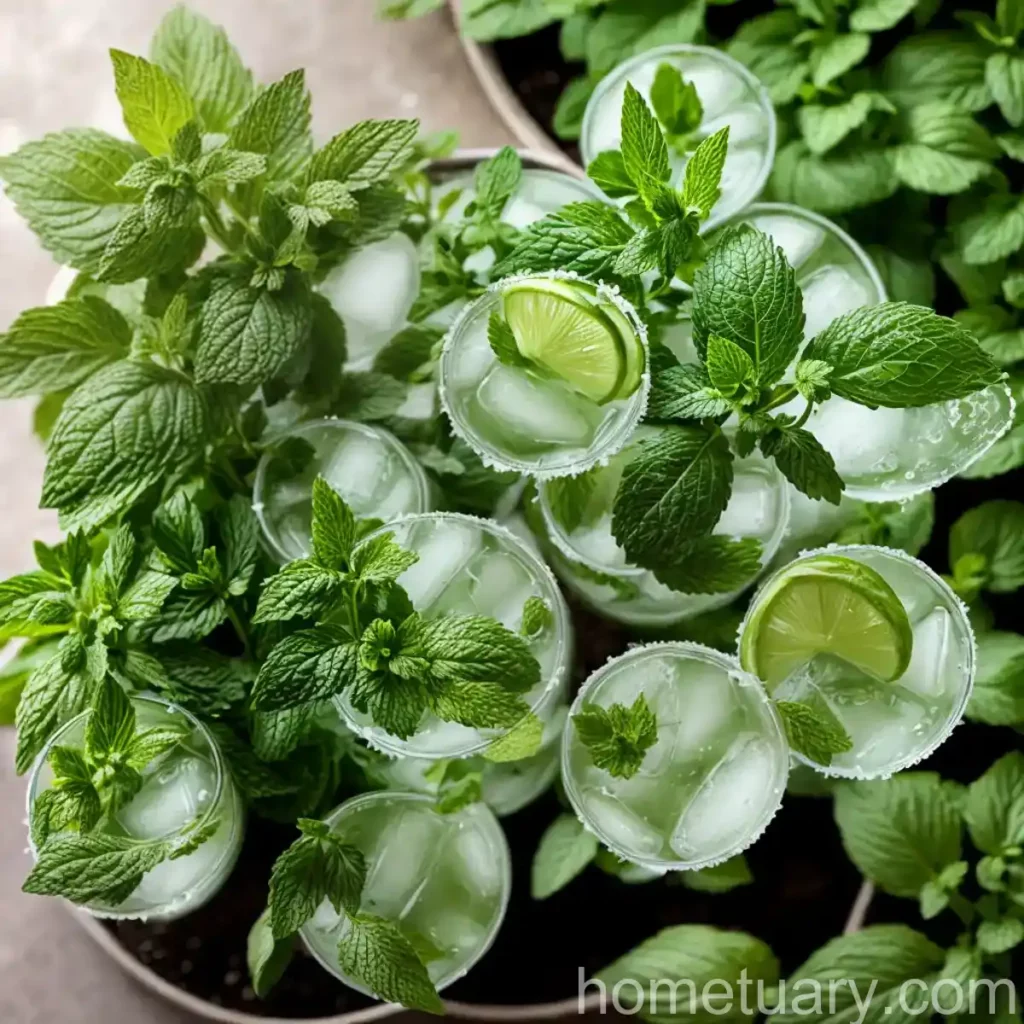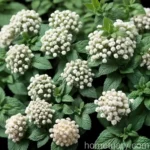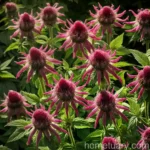The Versatile Mint (Mentha MARGARITA) Plant
Mint, scientifically known as Mentha MARGARITA, is one of the most versatile and popular herbs in the world. It belongs to the Lamiaceae family and is native to Europe, Asia, Africa, and Australia. Mint is widely known for its refreshing fragrance, culinary uses, and medicinal properties. In this comprehensive guide, we will explore the various aspects of mint, from its cultivation and care to its numerous applications in culinary, medicinal, and aromatic domains.
What is Mint (Mentha MARGARITA)?
Mint is a perennial herb with bright green, aromatic leaves and a characteristic refreshing flavor. There are several species of mint, each with its unique aroma and flavor profile, ranging from spearmint and peppermint to chocolate mint and pineapple mint. One of the popular varieties is Mentha spicata ‘MARGARITA’, also known as Apple mint or Pineapple mint, which is known for its mild, fruity flavor and attractive foliage.
Key Takeaways – Mint (Mentha MARGARITA)
- Scientific Name: Mentha MARGARITA
- Family: Lamiaceae
- Common Names: Apple mint, Pineapple mint
- Flavor Profile: Mild, fruity
- Aroma: Refreshing
Cultivation of Mint (Mentha MARGARITA)
Water
Mint plants have a high water requirement and should be consistently moist but not waterlogged. Adequate watering is crucial, especially during dry periods, to maintain optimum growth and flavor development. It is recommended to water mint plants deeply whenever the top inch of the soil feels dry to the touch.
Sunlight
Mint plants thrive in partial to full sunlight, ideally receiving at least 4-6 hours of direct sunlight each day. However, they can also tolerate partial shade, especially in hotter climates, as long as they receive sufficient light.
Soil
Well-draining, rich, and slightly acidic soil with a pH between 6.0 and 7.0 is ideal for growing mint. Amending the soil with organic matter such as compost or well-rotted manure can improve its texture and fertility, providing an optimal growing medium for the plants.
Fertilizer
Mint plants are relatively low-maintenance when it comes to fertilizer requirements. A balanced, all-purpose fertilizer can be applied sparingly in the spring to support healthy growth. However, excessive fertilization should be avoided as it can lead to lush growth with diminished flavor.
Pruning
Regular pruning is beneficial for mint plants as it helps promote bushy growth, prevents legginess, and encourages the production of new, flavorful leaves. Pinching off the stem tips and harvesting the leaves frequently can maintain the plant’s vigor and flavor intensity.
Propagation
Mint is easily propagated through stem cuttings or division. Stem cuttings can be rooted in water or directly placed in the soil, while division involves separating mature clumps into smaller sections and replanting them in fresh soil.
Container Cultivation
Growing mint in containers is a popular choice, especially for gardeners with limited space or those concerned about its potentially invasive nature. Selecting a large, well-draining container can accommodate the plant’s spreading root system and restrict its ability to spread uncontrollably.
Uses of Mint (Mentha MARGARITA)
Culinary Uses
Mint leaves are widely used in culinary preparations, adding a burst of freshness and flavor to a variety of dishes. From salads, soups, and sauces to beverages, desserts, and cocktails, mint leaves are prized for their ability to enhance the overall taste and aroma of foods.
Medicinal Properties
Mint possesses several medicinal properties, such as digestive aid, respiratory support, and anti-inflammatory effects. Its essential oil is valued for its cooling and soothing properties, making it a common ingredient in topical ointments, balms, and aromatherapy blends.
Aromatic Applications
The invigorating scent of mint is utilized in aromatherapy to promote relaxation, alleviate stress, and improve mental clarity. Mint essential oil is also incorporated into various personal care products, perfumes, and room fresheners for its uplifting and refreshing aroma.
Common Diseases and Pests of Mint (Mentha MARGARITA)
Common Diseases
Mint plants are susceptible to certain diseases, including:
| Disease | Symptoms | Management |
|---|---|---|
| Powdery Mildew | White powdery spots on leaves | Provide adequate air circulation; apply fungicidal sprays |
| Rust | Orange or brown pustules on the leaves | Remove and destroy infected plant parts; apply fungicides |
| Verticillium Wilt | Yellowing and wilting of leaves | Plant disease-resistant varieties; maintain soil moisture |
Disease Diagnosis
Diagnosing diseases in mint plants involves identifying characteristic symptoms such as discoloration, spots, wilting, or unusual growth patterns. Conducting a thorough inspection of the plant, including the upper and lower leaf surfaces, stems, and soil, can help in accurate diagnosis.
Common Pests
Mint plants may encounter various pests, including:
- Aphids: Small, soft-bodied insects that cluster on new growth and extract plant sap.
- Spider Mites: Minute arachnids that cause stippling and webbing on the leaves.
- Whiteflies: Tiny, white insects found on the undersides of leaves, leading to yellowing and wilting.
Implementing cultural practices such as regular pruning, maintaining plant vigor, and minimizing stress can help mitigate pest infestations. Additionally, natural predators and insecticidal soaps can aid in pest control.
Botanist’s Tips for Growing Mint (Mentha MARGARITA)
- Plant mint in a location where it can spread freely, such as contained areas or dedicated herb gardens, to prevent it from overrunning other plants.
- Consider companion planting with aromatic herbs like basil, lavender, or rosemary, which can complement the growth and pest repelling properties of mint.
- To promote strong flavor, restrict the use of fertilizers high in nitrogen, as excessive nitrogen can result in lush, less flavorful growth.
Fun Facts about Mint (Mentha MARGARITA)
- The use of mint dates back thousands of years, with historical mentions in ancient Greek mythology and Roman folklore.
- There are over 600 varieties of mint, each with its distinct aroma and flavor, ranging from citrusy and spicy to floral and fruity.
- Mint plants are known for their ability to repel certain insect pests, making them valuable additions to gardens and outdoor spaces.
Links to External Resources
For further information on the cultivation, uses, and benefits of mint (Mentha MARGARITA), refer to the following external resources:















